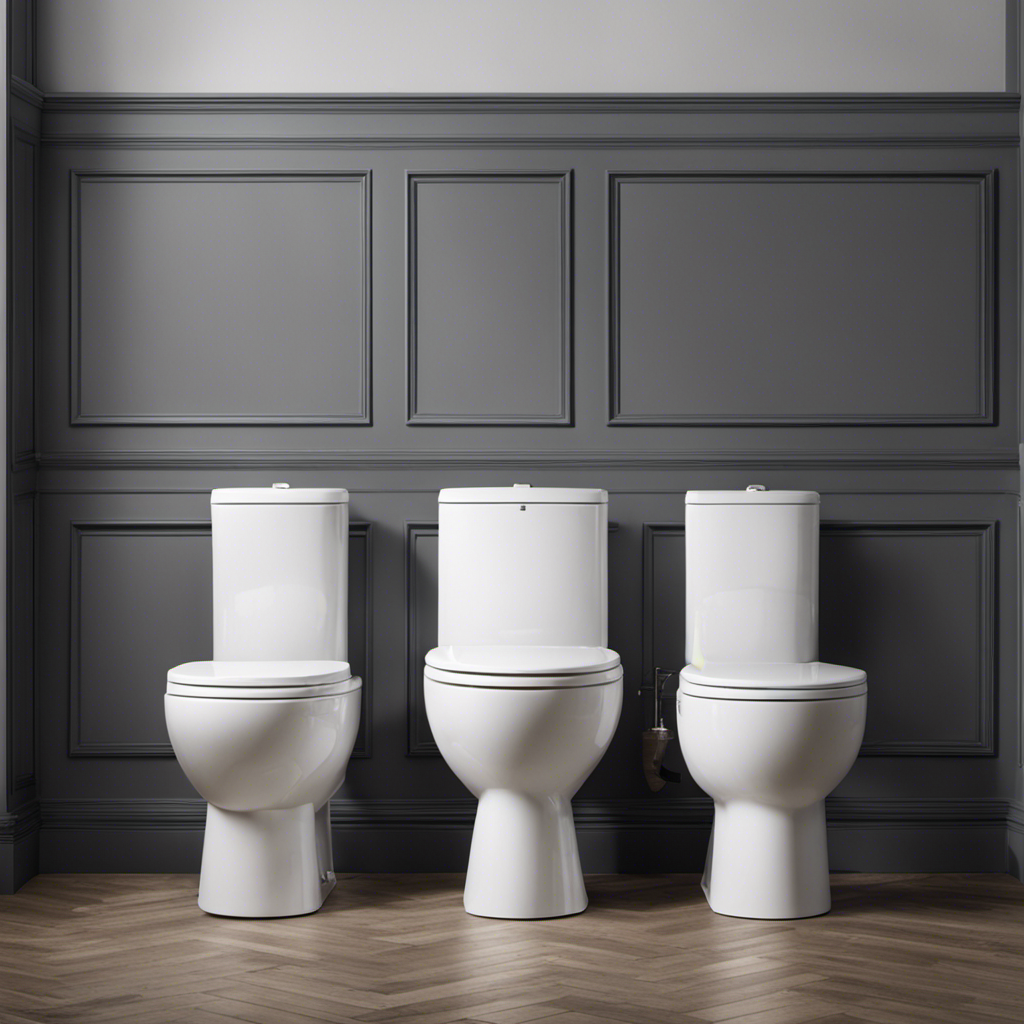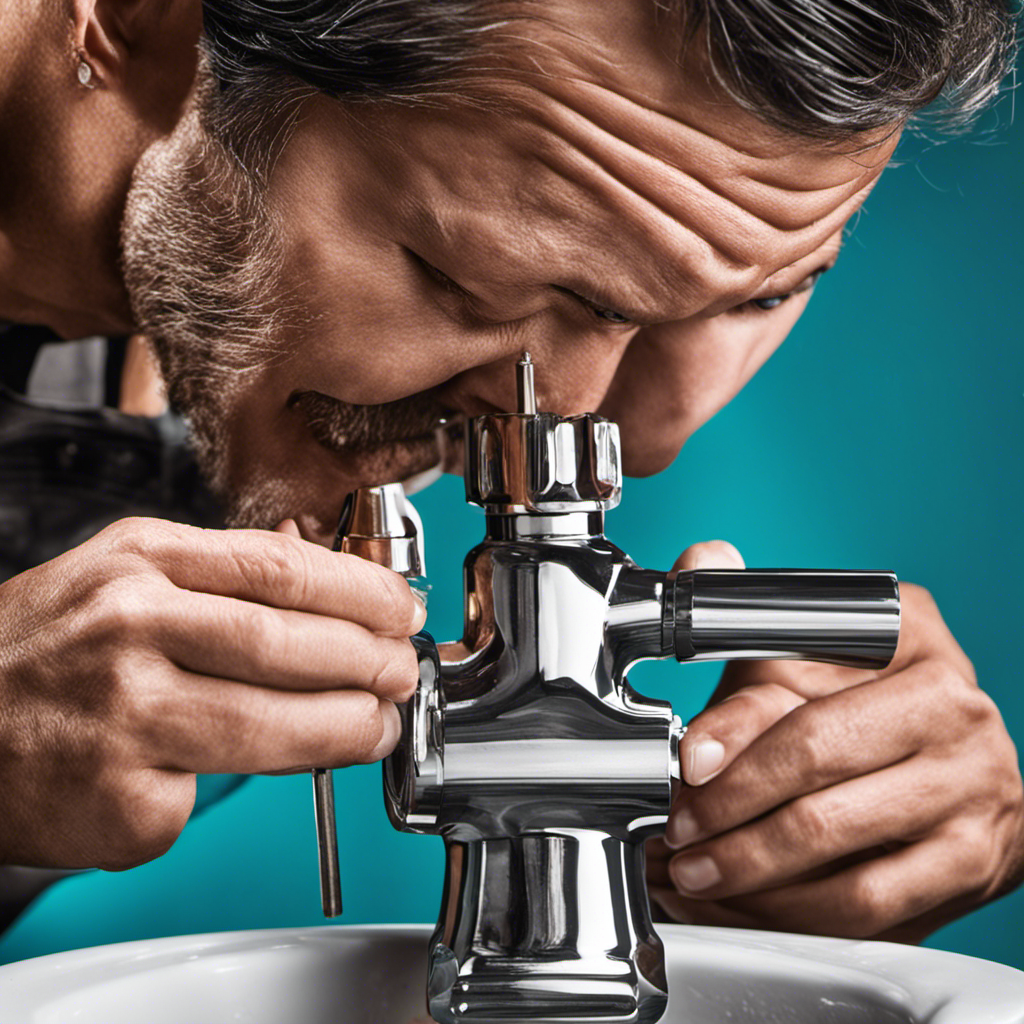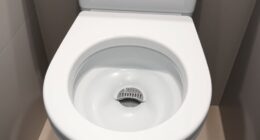Imagine your toilet as a well-oiled machine, effortlessly whisking away waste with each flush. But what happens when this seamless operation goes awry, leaving you with a clogged toilet and a sinking feeling in your stomach?
In this article, we will delve into the intricate workings of toilet clogs, exploring the common causes, the impact of water pressure and flushing habits, and the importance of preventive measures.
So buckle up and prepare to dive deep into the fascinating world of toilet plumbing.
Key Takeaways
- Flushing excessive amounts of toilet paper at once can overwhelm the toilet and cause clogs.
- High water pressure creates a forceful flow that helps push waste down the drain and prevent blockages.
- Using a moderate amount of toilet paper and flushing it down in small increments helps prevent clogs.
- Foreign objects such as paper towels, feminine hygiene products, and excessive amounts of toilet paper can easily get stuck in the pipes and cause persistent blockages.
Common Causes of Toilet Clogs
One common cause of toilet clogs is when you flush excessive amounts of toilet paper at once. This happens when you use more toilet paper than the toilet can handle, causing it to become overwhelmed and clogged. To prevent toilet clogs, it is important to only use an appropriate amount of toilet paper and to flush it down in small increments.
Another sign of a clogged toilet is when the water level rises, but does not go down after flushing. This indicates that there is a blockage in the pipes. Additionally, if you notice gurgling sounds or slow drainage in other fixtures, it could be a sign of a clogged toilet that needs to be addressed.
Regular maintenance and proper usage can prevent these issues from occurring.
How Water Pressure Affects Toilet Clogging
Water pressure greatly impacts the likelihood of a toilet getting clogged. The water flow and pipe diameter play crucial roles in determining the effectiveness of flushing and preventing clogs.
When the water pressure is high, it creates a forceful flow that helps to push waste down the drain and prevent any blockages. On the other hand, low water pressure can result in incomplete flushing, leading to the accumulation of debris and causing clogs.
Additionally, the pipe diameter also affects the water flow. A wider pipe diameter allows for a faster and smoother flow, reducing the chances of clogs. Conversely, a narrow pipe diameter can restrict the water flow, making it easier for debris to get stuck and cause blockages.
Therefore, maintaining proper water pressure and ensuring an appropriate pipe diameter are essential for preventing toilet clogs.
The Role of Flushing Habits in Toilet Clogs
Maintaining consistent flushing habits can significantly impact the prevention of toilet clogs. By adopting proper toilet flushing techniques, you can avoid unnecessary clogs and keep your bathroom functioning smoothly. Here are some important points to keep in mind:
- Use a moderate amount of toilet paper to prevent excessive buildup.
- Flush multiple times if needed, especially when dealing with solid waste.
- Avoid flushing non-flushable items like wipes, dental floss, or cotton swabs.
- Be mindful of the water level in the bowl and adjust the flushing power accordingly.
- Regularly clean and maintain your toilet to ensure optimal flushing performance.
Understanding the impact of foreign objects on toilet drains is crucial in maintaining a clog-free system. Let’s explore how these objects can disrupt the flow and cause blockages in the next section.
Understanding the Impact of Foreign Objects on Toilet Drains
Understanding how foreign objects can disrupt the flow and cause blockages is crucial in avoiding toilet clogs. When it comes to toilet maintenance, it’s important to be mindful of what goes down the drain.
Foreign objects such as paper towels, feminine hygiene products, and excessive amounts of toilet paper can easily get stuck in the pipes, leading to clogs. These objects do not break down like toilet paper does and can create a blockage that requires professional plumbing services to fix.
Additionally, items like toys, keys, and even cell phones should never be flushed down the toilet as they can cause severe blockages. By being cautious and mindful of what we flush, we can prevent these issues and maintain a smoothly functioning toilet.
Now, let’s explore some preventive measures to avoid toilet clogs.
Preventive Measures to Avoid Toilet Clogs
To prevent toilet clogs, it’s important to be mindful of what we flush down the drain. Proper toilet usage and maintenance are essential to keep the toilet functioning smoothly. Here are some preventive measures to avoid toilet clogs:
-
Use toilet paper sparingly: Excessive use of toilet paper can lead to blockages. Use only the necessary amount.
-
Avoid flushing wipes: Flushable wipes may claim to be safe, but they can cause clogs in the long run. Dispose of them in the trash instead.
-
Keep foreign objects away: Avoid flushing items like cotton balls, dental floss, or paper towels, as they can easily clog the toilet.
-
Regularly clean the toilet: A clean toilet is less likely to experience clogs. Use a toilet brush and cleaner to keep it free from buildup.
-
Consider a toilet plunger: Having a plunger handy can help you tackle small clogs before they become major issues.
Frequently Asked Questions
What Are Some Common Signs That Indicate a Toilet Is About to Get Clogged?
Warning signs of a clogged toilet include slow draining, water rising to the brim, and gurgling sounds. To prevent clogs, avoid flushing excessive toilet paper, feminine hygiene products, and bulky waste. Regular maintenance helps too.
Can Using Too Much Toilet Paper Cause a Clog?
Yes, using too much toilet paper can cause a clog. To prevent this, consider using toilet paper alternatives like wet wipes or bidets. Properly disposing of feminine hygiene products and avoiding flushing anything other than toilet paper can also help prevent toilet clogs.
How Can a Toilet Get Clogged if Only Liquid Waste Is Being Flushed?
Sometimes, even when only liquid waste is being flushed, a toilet can still get clogged. Factors like flushing inappropriate items or a poorly designed plumbing system can contribute to these frustrating clogs.
Are There Certain Types of Toilets That Are More Prone to Clogging Than Others?
Certain types of toilets may be more prone to clogging due to their design and specific factors. Factors such as the size of the trapway, water pressure, and the type of waste being flushed can all contribute to a toilet’s susceptibility to clogging.
Is It Possible for a Toilet to Become Clogged Due to a Problem in the Plumbing System?
It is possible for a toilet to become clogged due to problems in the plumbing system. Issues like blockages, pipe misalignment, or insufficient water pressure can all contribute to toilet clogging.
Conclusion
In conclusion, understanding the causes of toilet clogs is crucial in preventing future mishaps.
From common culprits like excessive toilet paper usage to foreign objects finding their way into the drain, there are various factors at play.
By being mindful of our flushing habits and ensuring proper water pressure, we can avoid the frustrating experience of a clogged toilet.
Remember, a clogged toilet can turn your world upside down faster than a cheetah chasing its prey.
So, don’t underestimate the importance of preventive measures and keep your toilet flowing smoothly.










